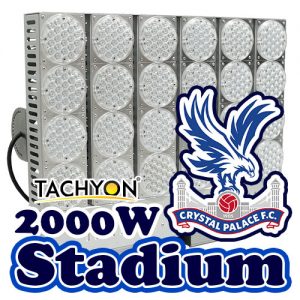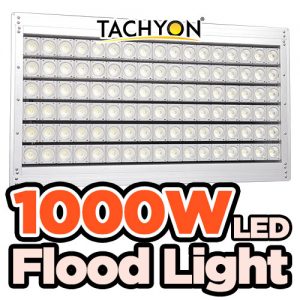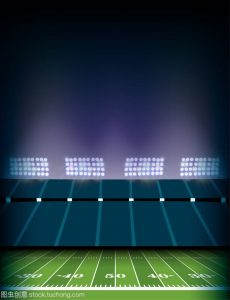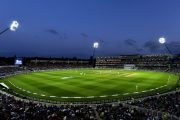1. Scientific Selection of Electric Light Source
Scientific selection of electric light source is the primary issue of lighting energy saving. At present, the luminous efficiency, lifespan, and color rendering performance of electric light sources are constantly improving, and energy-saving electric light sources are constantly emerging.
The light-emitting principle of electric light source can be divided into two categories. One is thermal radiation electric light sources, such as incandescent lamps, tungsten halogen lamps, etc. The other type is gas discharge light source, such as mercury lamp, sodium lamp, nitrogen lamp, metal halide lamp, etc. The luminous efficiency of various electric light sources is quite different, and the gas discharge light source is much higher than the thermal radiation electric light source.
Under normal circumstances, gas discharge light sources can be gradually replaced by thermal radiation electric light sources, and gas discharge light sources with high light efficiency should be selected as much as possible. .
Metal halide lamps have the characteristics of high luminous efficiency, good color rendering and high power. It is suitable for large-area lighting places such as theaters and assembly workshops.
Fluorescent lamps save 70% of electricity than incandescent lamps, and are suitable for indoor lighting such as offices, dormitories and workshops with ceiling heights less than 5 meters.
The luminous efficiency of LED lamps is 50% higher than that of ordinary fluorescent lamps. Therefore, LED lamps are the most efficient and energy-saving electric light sources introduced in the implementation of today’s “green lighting project”.
In the case of frequent opening and closing, small area and low lighting requirements, LED lamps with low power (below 10W) can be used.
2. Reasonable Choice of Lighting Fixtures
The main function of the lamp is to reasonably distribute the luminous flux radiated by the light source, meet the light distribution requirements of the environment and operations, and not produce glare and serious light curtain reflection.
When choosing lamps, in addition to considering the requirements of ambient light distribution and limiting glare, the efficiency of lamps should also be considered, and high-efficiency lamps should be selected.
Among all kinds of lamps, LED lamps are mainly used for indoor lighting, mercury lamps and sodium lamps are used for outdoor lighting, and they can also be installed together for mixed light lighting. In this way, the light efficiency is high, the power consumption is low, the light color is realistic, coordinated, and the vision is comfortable.
3. Reasonable Choice of Illuminance and Lighting Method
The choice of illuminance is an important issue in lighting design. If the illumination is too low, it will damage the vision of the staff and affect the product quality and production efficiency. Unreasonably high illumination will waste electricity. The choice of illuminance must be appropriate for the visual work being performed. Factory lighting can choose illuminance and necessary lighting quality according to TJ31-79 “Lighting Design Standards for Industrial Enterprises” promulgated by the state, and comprehensively consider the total efficiency of the lighting system.
Under the condition of meeting the standard illuminance, in order to save electricity, three ways of general lighting, local lighting and mixed lighting should be properly selected. When one light source cannot meet the color rendering requirements, a mixed lighting method of two or more light sources can be used. This not only improves the light efficiency, but also improves the color rendering.
In addition, making full use of natural light and choosing the right natural lighting can also improve the working environment, make people feel comfortable, and be beneficial to health. Making full use of the reflectivity of the indoor light-receiving surface can also effectively improve the utilization rate of light. For example, the reflection coefficient of the white wall can reach 70-80%, which can also save electricity.
4. Strengthen the Management of Lighting Electricity Consumption
Strengthening lighting power management is an important aspect of lighting power saving. Lighting power-saving management is mainly based on power-saving publicity and education and the establishment and implementation of lighting power-saving systems, so that people can develop the habit of turning off lights at will. Electricity meters are installed by households and charged according to the actual electricity consumption. Install electricity quantizers in collective dormitories to limit electricity consumption. These can effectively reduce lighting power consumption.
When the bulb is dirty, its luminous flux may drop below 50% of the normal luminous flux. When light bulbs, lamps, glass, and walls are not clean, their reflectivity and light transmittance will also be greatly reduced. In order to ensure the luminous effect of the bulbs, the factory should regularly clean the bulbs, lamps and walls according to the lighting environment.
5. Other Lighting Energy-saving Measures
The loss of the lighting circuit accounts for about 4% of the input electric energy. The main factors that affect the loss of lighting lines are the power supply method and the cross-sectional area of the wire. Most of the lighting voltage is 220V, and the lighting system can be powered by three ways: single-phase two-wire, two-phase three-wire, and three-phase four-wire. The three-phase four-wire power supply has much less line loss than other power supply methods. Therefore, the lighting system should be powered by a three-phase four-wire system as much as possible.
The classification of lighting, according to the astigmatism of lamps, lighting is divided into the following five categories.
(1) Direct lighting: All or more than 90% of the light source is directly projected on the illuminated object. It is characterized by high brightness, giving people a bright and compact feeling.
(2) Semi-direct lighting: 60%-90% of the light source is directly projected onto the illuminated object, of which 10%-40% is reflected and then projected onto the object. It’s still brighter, but softer than direct lighting.
(3) Indirect lighting: the light source to the illuminated object. The amount of light is weak, the light is soft, there is no glare and obvious shadows, and it has a peaceful and peaceful atmosphere.
(4) Semi-indirect lighting: More than 60% of the light of the light source is reflected on the illuminated object, and only a small amount of light is directed to the illuminated object.
(5) Diffuse lighting: use a translucent frosted glass cover, a milky white cover or a special grille to make the light diffuse in multiple directions. Its light is soft and has a good artistic effect. Suitable for living room, conference room and some large halls and halls lighting.




